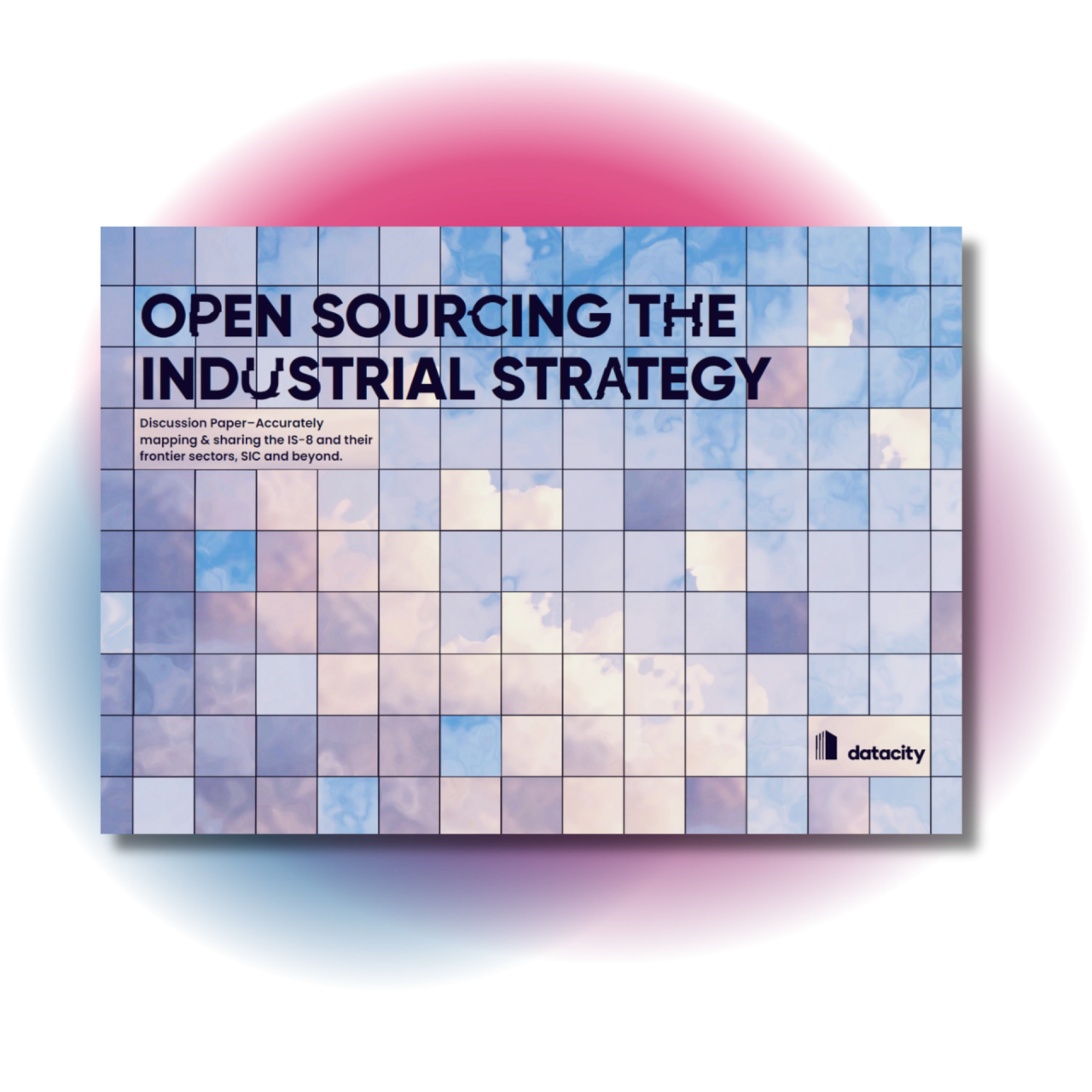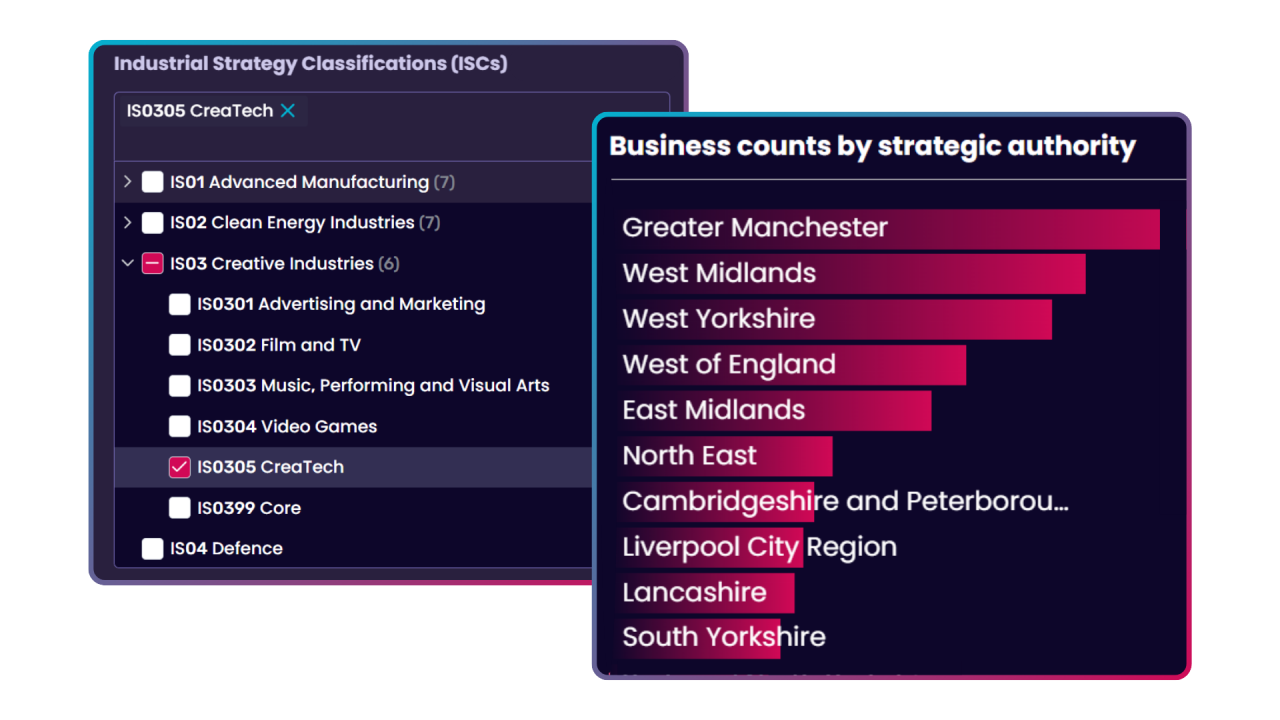Open Sourcing the Industrial Strategy
This report reviews the Government’s definitions of the IS-8 sectors. It offers a clear, real-time mapping of the UK’s Industrial Strategy using modern, explainable classification methods that move beyond outdated SIC codes.

Get clarity on the IS-8
The UK has a strategy for growth. But strategies need substance. That means data that’s accurate, consistent and built for the future.
Where others have rushed IS-8 analysis using outdated classifications and vague definitions, we’ve taken a different approach. Throughout 2025, we’ve worked in the open, refining our understanding of the IS-8 with direct input from government and industry.
Our new report, ‘Open Sourcing the Industrial Strategy’, aligns with the government’s latest thinking. Not just on the eight IS-8 sectors, but on the Frontier Industries driving them. Powered by real-time data, explainable AI and built with public sector partners, it’s the clearest and most robust IS-8 mapping available today.
Now policymakers, analysts and investors can track the sectors shaping the UK’s economy in real time.

Inside the report
‘Open Sourcing the Industrial Strategy’ builds on the government’s foundational work on the IS-8 – reviewing their sector definitions and providing a real-time, machine learning-led alternative.
Here’s what you’ll find inside:
- A review of government definitions for each IS-8 sector – from Advanced Manufacturing to Clean Energy
- An assessment of the government’s confidence in those definitions from High to Low
- Side-by-side comparisons of SIC-based methods vs our RTIC-led approach
- Real company data: business counts, innovation scores, and frontier sector coverage
- Clear recommendations: which RTICs to use for each sector – many built in partnership with government
- A new definition of the IS-8: future-ready, live in the platform, and open for collaboration
This isn’t a static PDF. The new classifications are already live in our Industry Engine platform, and we’ve laid out the next steps – including a new IS-8 working group and a longer-term ambition to publish IS-8 data as open data.
This report is just the start. If you’d like to be involved in what’s next, we’d love to hear from you.
Download the report
Clarity starts here. Get instant access to the most robust IS-8 mapping to date. You’ll get a clear, real-time definition of the UK’s growth-driving sectors, with detailed comparisons to government definitions, analysis of what SIC codes miss, and a new set of RTICs ready to use.
Access the data
The full IS-8 dataset – covering Advanced Manufacturing, Clean Energy, Digital & Technologies, Financial Services, Life Sciences, Creative Industries, Defence and Professional & Business Services – is already live in our platform.
Explore the companies powering these industries, get a real-time view of their size and shape, and drill down into the Frontier Industries identified by government – from Quantum and Cyber to Hydrogen and Advanced Materials.
If you’re a customer, it’s ready and waiting in the Industry Engine. If not, start a free trial and see what real clarity looks like.

Join our IS-8 working group
We’re building a shared, real-time evidence base for the Industrial Strategy, and we’re inviting partners to help shape it.
The IS-8 working group will bring together government, academics and sector experts to improve the data, definitions and tools needed to deliver the strategy.
If you want to contribute to a clearer, more actionable view of the UK economy this is your chance to get involved.
Register your interest and help shape what comes next.

Explore the data today
Go beyond the report. Access real-time insights on the IS-8 sectors in our Industry Engine platform. Start your free trial today.